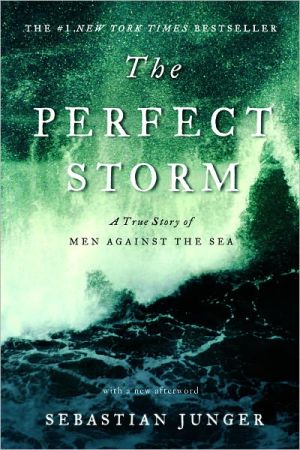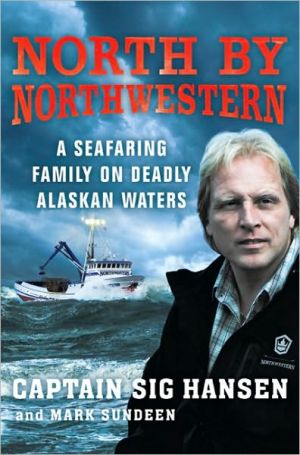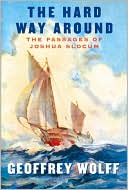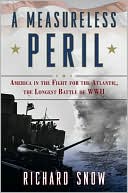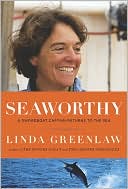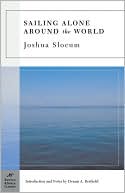The Perfect Storm: A True Story of Men Against the Sea
A real-life thriller that leaves us with the taste of salt on our tongues and a terror of the deep.
Search in google:
The bestselling book that became the blockbuster film starring George Clooney, Mark Wahlberg, and Diane Lane. Boston Globe Mesmerizing....Packs an emotional wallop.
GLOUCESTER, MASS., 1991\ It's no fish ye're buying, it's men's lives.\ --Sir Walter Scott\ The Antiquary, Chapter 11\ A soft fall rain slips down through the trees and the smell of ocean is so strong that it can almost be licked off the air. Trucks rumble along Rogers Street and men in t-shirts stained with fishblood shout to each other from the decks of boats. Beneath them the ocean swells up against the black pilings and sucks back down to the barnacles. Beer cans and old pieces of styrofoam rise and fall and pools of spilled diesel fuel undulate like huge iridescent jellyfish. The boats rock and creak against their ropes and seagulls complain and hunker down and complain some more. Across Rogers Street and around the back of the Crow's Nest, through the door and up the cement stairs, down the carpeted hallway and into one of the doors on the left, stretched out on a double bed in room number twenty-seven with a sheet pulled over him, Bobby Shatford lies asleep.\ He's got one black eye. There are beer cans and food wrappers scattered around the room and a duffel bag on the floor with t-shirts and flannel shirts and blue jeans spilling out. Lying asleep next to him is his girlfriend, Christina Cotter. She's an attractive woman in her early forties with rust-blond hair and a strong, narrow face. There's a TV in the room and a low chest of drawers with a mirror on top of it and a chair of the sort they have in high-school cafeterias. The plastic cushion cover has cigarette burns in it. The window looks out on Rogers Street where trucks ease themselves into fish-plant bays.\ It's still raining. Across the street is Rose Marine, where fishing boats fuel up, and across a smallleg of water is the State Fish Pier, where they unload their catch. The State Pier is essentially a huge parking lot on pilings, and on the far side, across another leg of water, is a boatyard and a small park where mothers bring their children to play. Looking over the park on the corner of Haskell Street is an elegant brick house built by the famous Boston architect, Charles Bulfinch. It originally stood on the corner of Washington and Summer Streets in Boston, but in 1850 it was jacked up, rolled onto a barge, and transported to Gloucester. That is where Bobby's mother, Ethel, raised four sons and two daughters. For the past fourteen years she has been a daytime bartender at the Crow's Nest. Ethel's grandfather was a fisherman and both her daughters dated fishermen and all four of the sons fished at one point or another. Most of them still do.\ The Crow's Nest windows face east into the coming day over a street used at dawn by reefer trucks. Guests don't tend to sleep late. Around eight o'clock in the morning, Bobby Shatford struggles awake. He has flax-brown hair, hollow cheeks, and a sinewy build that has seen a lot of work. In a few hours he's due on a swordfishing boat named the Andrea Gail, which is headed on a one-month trip to the Grand Banks. He could return with $5,000 in his pocket or he could not return at all. Outside, the rain drips on. Chris groans, opens her eyes, and squints up at him. One of Bobby's eyes is the color of an overripe plum.\ Did I do that?\ Yeah.\ Jesus.\ She considers his eye for a moment. How did I reach that high?\ They smoke a cigarette and then pull on their clothes and grope their way downstairs. A metal fire door opens onto a back alley, they push it open and walk around to the Rogers Street entrance. The Crow's Nest is a block-long faux-Tudor construction across from the J. B. Wright Fish Company and Rose Marine. The plate-glass window in front is said to be the biggest barroom window in town. That's quite a distinction in a town where barroom windows are made small so that patrons don't get thrown through them. There's an old pool table, a pay phone by the door, and a horseshoe-shaped bar. Budweiser costs a dollar seventy-five, but as often as not there's a fisherman just in from a trip who's buying for the whole house. Money flows through a fisherman like water through a fishing net; one regular ran up a $4,000 tab in a week.\ Bobby and Chris walk in and look around. Ethel's behind the bar, and a couple of the town's earlier risers are already gripping bottles of beer. A shipmate of Bobby's named Bugsy Moran is seated at the bar, a little dazed. Rough night, huh? Bobby says. Bugsy grunts. His real name is Michael. He's got wild long hair and a crazy reputation and everyone in town loves him. Chris invites him to join them for breakfast and Bugsy slides off his stool and follows them out the door into the light rain. They climb into Chris's twenty-year-old Volvo and drive down to the White Hen Pantry and shuffle in, eyes bloodshot, heads throbbing. They buy sandwiches and cheap sunglasses and then they make their way out into the unrelenting greyness of the day. Chris drives them back to the Nest and they pick up thirty-year-old Dale Murphy, another crew member from the Andrea Gail, and head out of town.\ Dale's nickname is Murph, he's a big grizzly bear of a guy from Bradenton Beach, Florida. He has shaggy black hair, a thin beard, and angled, almost Mongolian eyes; he gets a lot of looks around town. He has a three-year-old baby, also named Dale, whom he openly adores. The Perfect Storm. Copyright © by Sebastian Junger. Reprinted by permission of HarperCollins Publishers, Inc. All rights reserved. Available now wherever books are sold.
ForewordGeorges Bank, 18963Gloucester, Mass., 19915God's Country37The Flemish Cap65The Barrel of the Gun95Graveyard of the Atlantic117The Zero-Moment Point136The World of the Living147Into the Abyss166The Dreams of the Dead202Acknowledgments226
\ Kansas City StarHarrowing, relentless . . . and thoroughly enjoyable.\ \ \ \ \ Entertainment WeeklyFerociously dramatic and vividly written.\ \ \ Philadelphia InquirerTakes readers into the heart of the maelstrom and shows nature’s splendid and dangerous havoc at its utmost.\ \ \ \ \ Washington Post Book WorldSuperb...told with authority, brio, and deep sympathy for those in peril on the sea.\ \ \ \ \ Boston GlobeMesmerizing....Packs an emotional wallop.\ \ \ \ \ Philadelphia InquirerTakes readers into the maelstrom and shows nature's splendid and dangerous havoc at its utmost.\ \ \ \ \ LA Times Book ReviewA wild ride that brilliantly captures the awesome power of the raging sea.\ \ \ \ \ Penny SmithThe Perfect Storm by Sebastian Junger is brilliant. I've given it to all my friends. It's got everything, drama, pathos, terror on the high seas, and then the exciting build-up to the crescendo with the 100 foot waves. — Cover Magazine\ \ \ \ \ Anthony Bailey...thrilling -- a boat ride into and (for us) out of a watery hell. -- New York Times Book Review\ \ \ \ \ Publishers WeeklyIn meteorological jargon, a "perfect storm" is one unsurpassed in ferocity and duration a description that fits the so-called Halloween Gale of October 1991 in the western Atlantic. Junger, who has written for American Heritage and Outside, masterfully handles his account of that storm and its devastation. He begins with a look at the seedy town of Gloucester, Mass., which has been sliding downhill ever since the North Atlantic fishing industry declined, then focuses his attention on the captain and the five-man crew of the Andrea Gail, a swordfishing vessel. He then charts the storm particularly formidable because three storms had converged from the south, the west and the north that created winds up to 100 miles an hour and waves that topped 110 feet. He reconstructs what the situation must have been aboard the ship during the final hours of its losing battle with the sea, and the moments when it went down with the loss of all hands. He recaps the courageous flight of an Air National Guard helicopter, which had to be ditched in the ocean leaving one man dead while the other four were rescued then returns to Gloucester and describes the reaction to the loss of the Andrea Gail. Even with the inclusion of technical information, this tale of the Storm of the Century is a thrilling read and seems a natural for filming.\ \ \ \ \ School Library JournalThe powerfully destructive forces of nature that created the Halloween Gale of 1991 are made vivid through interviews with survivors, families, and Coast Guard rescue crews. True adventure at its best\ \ \ \ \ Entertainment WeeklyGuaranteed to blow readers away...A+.\ \ \ \ \ Washington Post Book WorldSuperb...told with authority, brio, and deep sympathy for those in peril on the sea.\ \ \ \ \ Kirkus ReviewsThe experience of being caught at sea in the maw of a 'perfect' storm (that is, one formed of an almost unique combination of factors), a monstrous tempest that couldn't get any worse, is spellbindingly captured by Junger. It's late October 1991, and the Andrea Gail, a fishing boat out of Gloucester, Mass., is making its way home from the Grand Banks with a crew of six, 40,000 pounds of swordfish, and a short market promising big returns. Coming to meet the boat is a hurricane off Bermuda, a cold front coming down from the Canadian Shield, and a storm brewing over the Great Lakes. Things get ugly quickly, unexpectedly. The Andrea Gail is never seen again, lost to 100-foot waves and winds topping 120 miles per hour. Junger builds his story around the vessel; he starts with biographies of the deckhands and the captain, and gives as complete an account of the boat's time at sea as he can dredge up, so readers feel an immediate stake in its fate. Since it is unknown exactly how the Andrea Gail sank, and because Junger wanted to know what it was like for the men during their last hours, he details the horrific tribulations of a sailboat caught in the storm, the rescue of the three aboard it by the Coast Guard, and the ditching of an Air National Guard helicopter after it ran out of fuel during another rescue operation. Junger's fine dramatic style is complemented by a wealth of details that flesh out the story: wave physics and water thermoclines; what it means if you see whitewater outside your porthole; where the terms mayday, ill-wind, and down East came from. Reading this gripping book is likely to make the would-be sailor feel both awed and a little frightened bynature's remorseless power.\ \
